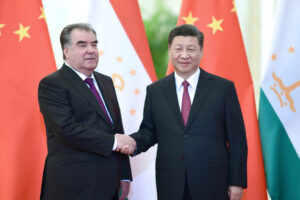In a significant environmental milestone, Indonesia has initiated a comprehensive effort to rid the country of carcinogenic Polychlorinated Biphenyls (PCBs). This critical step comes after a transformative project by the Ministry of Environmentand Forestry, backed by the UN Industrial Development Organization (UNIDO) and funded by the Global Environmental Facility, led to the establishment of the nation’s first PCB Waste Destruction Facility. The facility, located in Nambo Village, 40 kilometers south of Jakarta, has already begun treating these hazardous substances.
PCBs, widely used in various applications, including transformers, paints, sealants, and carbon paper, have long posed serious health risks to both humans and the environment. Recognizing the importance of tackling this issue, Indonesia joined the global effort by signing the Stockholm Convention, which bans the use of 31 toxic chemicals, including PCBs. However, until recently, Indonesialacked the infrastructure to safely treat and dispose of these hazardous materials.
The PCB Waste Destruction Facility, managed by Prasadha Pamunah Limbah Industri (PPLi), boasts the capacity to handle 20 tonnes of liquid waste and 10 tonnes of solid waste daily. Companies like Goodyear, which had stored 20 tonnes of PCB-contaminated materials, have already benefited from this crucial resource. Properly disposing of PCBs, as demonstrated by Goodyear, proves to be a cost-effective solution compared to managing potential spills and environmental risks.
A worker is checking the treatment of the PCB contaminated fluid. (JakartaDaily.id/UNIDO)
Lydia Andalucia, Environment, Health, and Safety Manager at Goodyear Indonesia, emphasized the significance of this development: “Properly disposing of the PCBs once and for all cost much less than dealing with spills or even the risks of spills.”
The treatment process involves draining the oil from transformers, dismantling metal components, and using a special solvent for decontamination. Once neutralized, the PCBs are either placed in landfills or burnt in high-thermal incinerators. While Indonesia had been incinerating PCBs since 1996, the burning of PCBs was prohibited in 2012. This left a gap in the country’s capacity to handle these hazardous materials until May 2023 when the PCB Waste Destruction Facility became operational.
UNIDO has been at the forefront of advocating non-combustion methods for PCB destruction, aligning with the Stockholm Convention‘s recommendations. These environmentally friendly techniques do not emit CO2, dioxin, or furan gases. To date, the facility has treated approximately 80 tonnes of PCBs, indicating substantial untapped capacity.
A worker measuring the sample, to ensure that its PCB content is now below the legal limit, following treatment. (JakartaDaily.id/UNIDO)
Indonesia‘s utility companies, as well as those in the mining, petrochemical, and oil and gas sectors, have been storing most of the nation’s PCBs. PPLi is actively engaging with these entities, including the national electricity company PLN, to establish a roadmap and timeline for the safe delivery and treatment of PCBs and PCB-contaminated materials.
Elpido, Director of Safety, Health, Environment, and Quality at PPLi, praised Indonesia‘s pioneering role in the Asia-Pacific region, stating, “Now with a facility in place, compliance with the deadlines set in the Convention requires advocacy and enforcement.”
As Indonesia takes substantial strides toward eliminating carcinogenic PCBs, it not only safeguards the environment but also prioritizes the health and well-being of its people. Goodyear‘s proactive approach serves as a testament to the positive impact of this initiative, aligning with global efforts to create a safer and more sustainable future for all.















